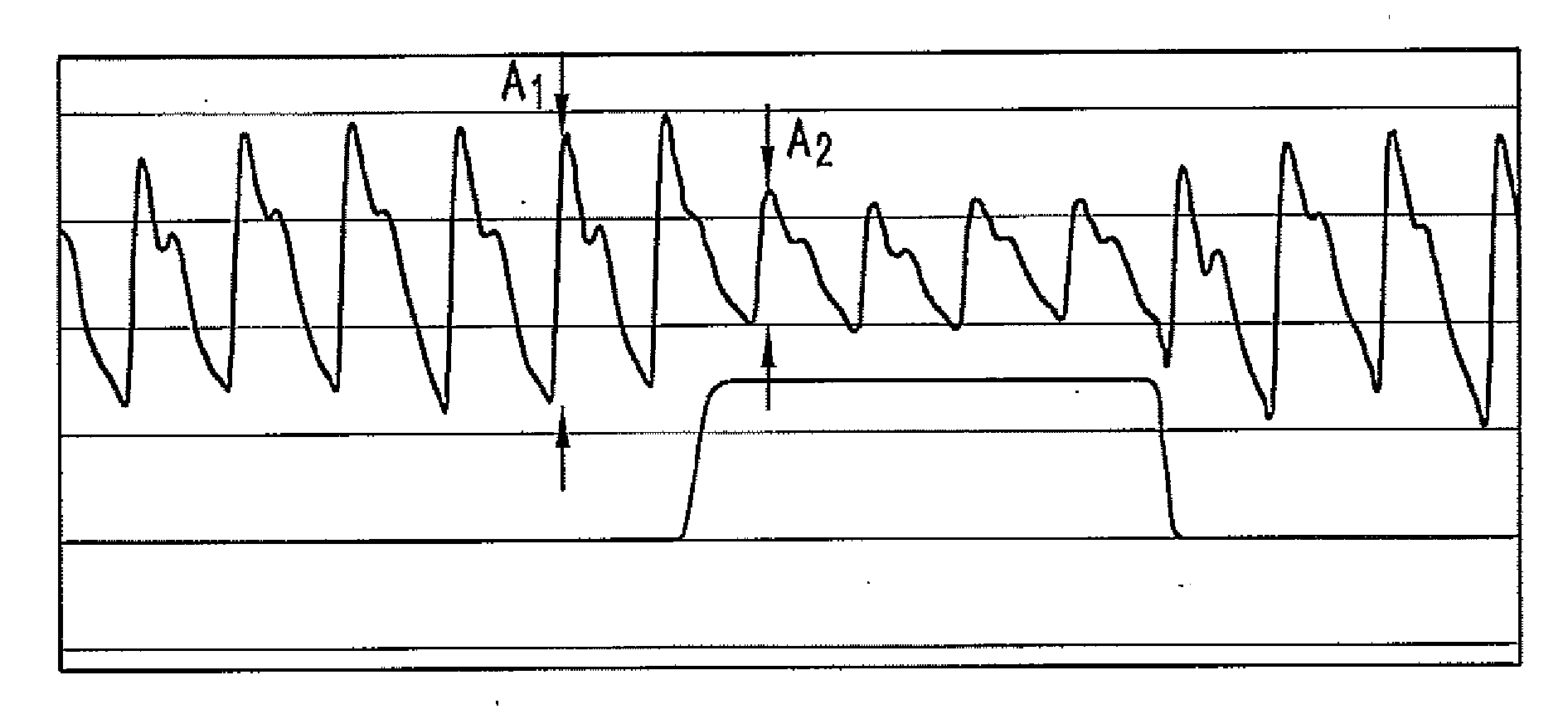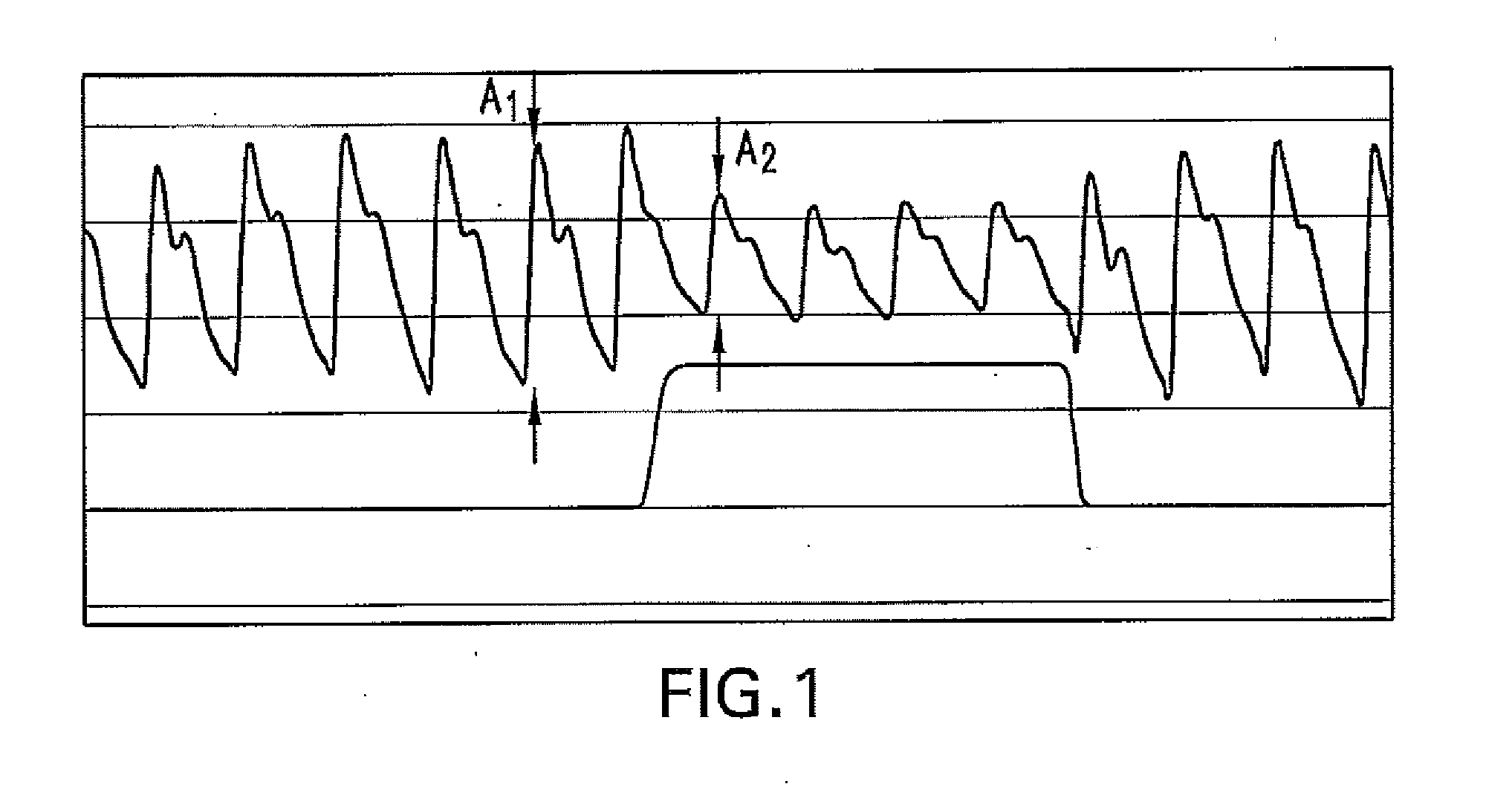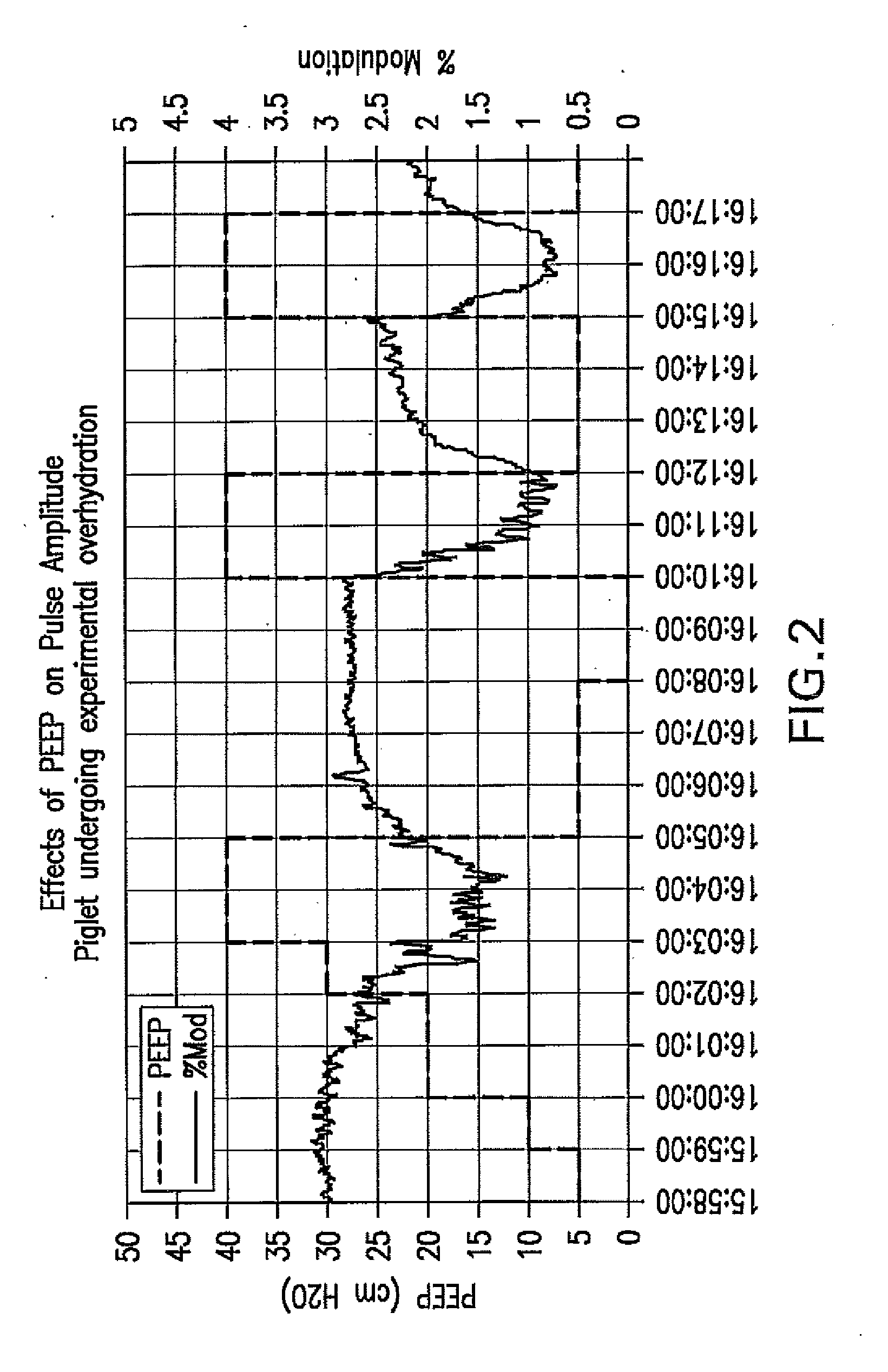Method For Determining Hemodynamic Effects Of Positive Pressure Ventilation
a positive pressure ventilation and hemodynamic effect technology, applied in the field of determining the hemodynamic effect of positive pressure ventilation, can solve the problems of adjusting the blood distribution, the change of optical response and modulation, and the difficulty in estimating the heart's total stroke volum
- Summary
- Abstract
- Description
- Claims
- Application Information
AI Technical Summary
Benefits of technology
Problems solved by technology
Method used
Image
Examples
example 1
[0038]In a ventilated animal subject, PEEP was gradually increased over five minutes from 5 to 40 cm H2O and a roughly 50% decrease in PPG modulation (from 3.0% to 1.5%) was observed (FIG. 2). In addition, a 65-70% decrease in PPG modulation (from 2.7% to % 0.9 and subsequently 2.4% to 0.8%) each of the two times that PEEP was increased in a single step from zero to 40 cm H2O (FIG. 2). Thus, modest reductions in PPG modulation occurred at 16:02:00 with when PEEP was increased from 20 to 30 cm H2O, with very pronounced reductions in PPG amplitude for each of the periods when PEEP was increased to 40 cm H2O.
[0039]This example indicates that that this particular animal subject experienced roughly 50% and later 65-70% reductions in stroke volume at a result of experiencing an airway pressure at or above 40 cm H2O. Without necessarily limiting any particular embodiment to any specific mechanism of action, the smaller relative reduction in PPG modulation when PEEP was increased gradually ...
PUM
 Login to View More
Login to View More Abstract
Description
Claims
Application Information
 Login to View More
Login to View More - R&D
- Intellectual Property
- Life Sciences
- Materials
- Tech Scout
- Unparalleled Data Quality
- Higher Quality Content
- 60% Fewer Hallucinations
Browse by: Latest US Patents, China's latest patents, Technical Efficacy Thesaurus, Application Domain, Technology Topic, Popular Technical Reports.
© 2025 PatSnap. All rights reserved.Legal|Privacy policy|Modern Slavery Act Transparency Statement|Sitemap|About US| Contact US: help@patsnap.com



